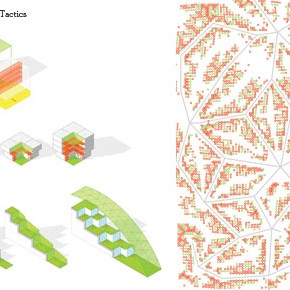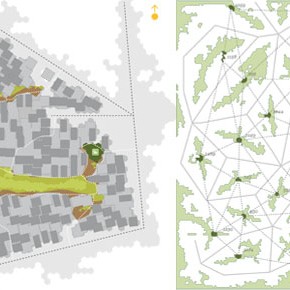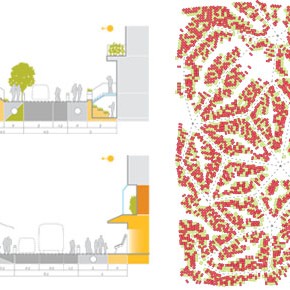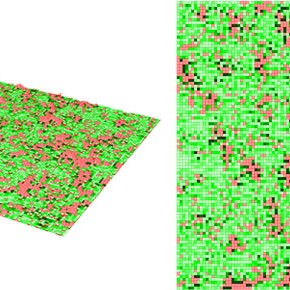
Kungsängen, Stockholm Region
Stockholm is enacting policies to both mitigate and prepare for the effects of climate change, including a goal to be fossil fuel free by 2050 and the adaptation of building codes for a warmer wetter climate. Within 20-30 years, Stockholm is expecting 150,000 new residents, and within 50 years, a 4-6 deg C. increase in...

Brooklyn Navy Yard
The project proposes a new productive neighborhood on a 34 ha (83acre) site in Brooklyn, New York which sits between three desirable neighborhoods, and at a critical junction in networks, easily accessible from Manhattan, Brooklyn and the rest of New York City. Adjacency to the converted Navy Yard provides easy access to workspace for small...

Productive Typologies
Our built clusters display unique internal and external characteristics. Internally, within the clusters, are dwellings, greenhouses and mixing spaces in a gradient of public/private-ness of each. Externally, the clusters are situated uniquely between two distinct networks, urban and agricultural. The unique configuration suggests new architectural typologies. Cluster analysis Topological analysis, at the cellular level, informs...

Productive Blocks
From the summation of these previous steps, the basic form of organization of our urban tissue emerges; the Productive Block. The section reveals three layers of spatial experience – Productive Commons on the interior, Urban Corridors around the edges, and a permeable zone of dwellings, greenhouses and public mixing spaces, delimiting the two. The Productive...

Productive Networks
The previously generated network edges will become the primary urban circulation paths and will need to support the full complement of public urban programs including Social Mixing (retail, entertainment, institutions and workspaces), Transport, and Recreation/Gathering (urban squares and green spaces). Topological analysis informs the program types and area assigned to each network component. Highly connected...

Settlement Simulation
The Settlement Simulation is a computational model based on multi-state cellular automata. The model uses simple behavioral rules to recreate the aggregation logic of dwellings and small subsistence farms in a given field via a self-organizing ‘vernacular’ methodology. The goal of the simulation is to investigate the sorts of distributions and collective form that might...

Edible Infrastructures
2011 saw the world’s population surpass 7 billion people. Since 2008, over half of us live in cities, and that percentage is growing, set to exceed 68.7% by 2050 (UNFPA 2011). As cities grow, agricultural production is driven further from urban consumers while claiming more and more of our forests and natural habitats. Increasingly, our...

Edible Infrastructures
Edible Infrastructures is an investigation into a mode of urbanism which considers food as an integral part of a city’s metabolic infrastructure. Working with algorithms as design tools, we explore the generative potential of such a system to create an urban ecology that: provides for its residents via local, multi-scalar, distributed food production, reconnects the...



